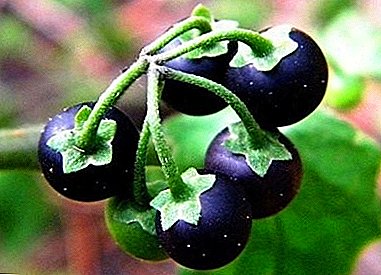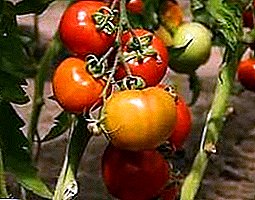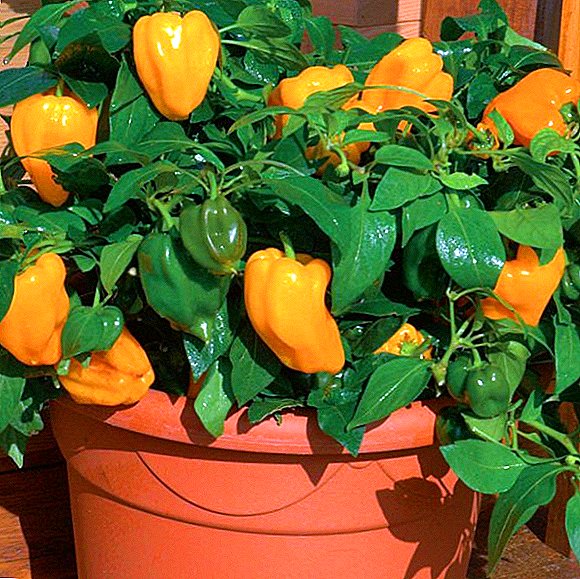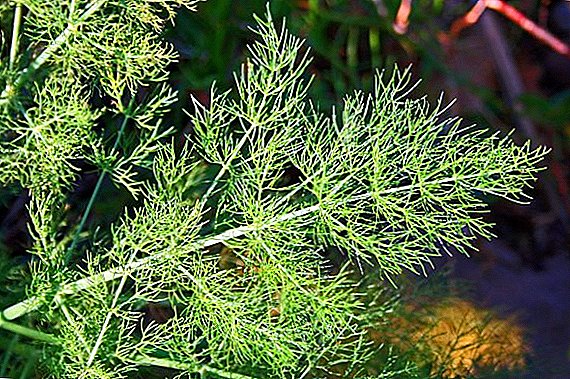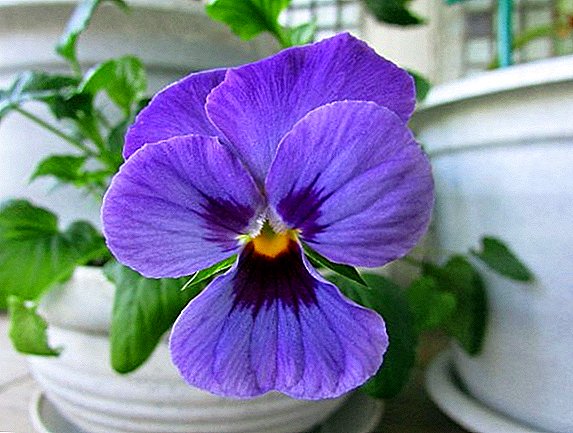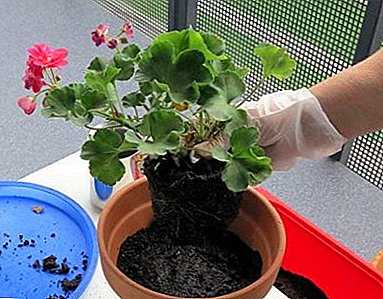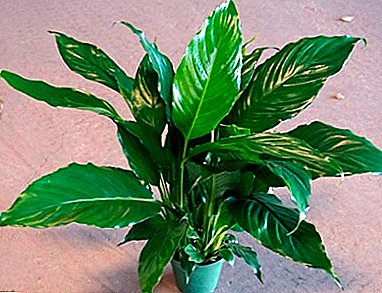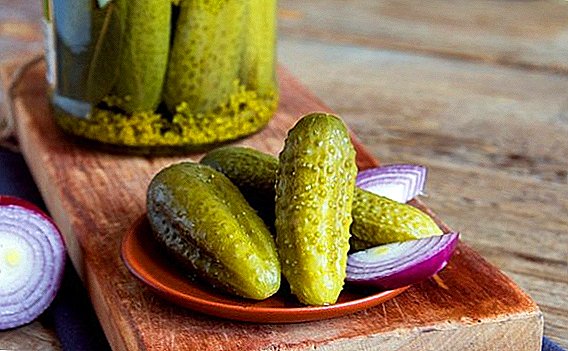
Cucumbers and zucchini grow in abundance in the beds in all corners of the country. But only the most daring gardeners cultivate their relatives in the pumpkin family - watermelons and melons.
But a good harvest of these berries rich in vitamins and macronutrients is easy to get even in the northern regions. Only good is needed greenhouse.
Why in the greenhouse?
Gourds demanding of soil composition, humidity and air temperature. Deep root system does not tolerate close groundwater, begins to rot. Late frosts, which are not uncommon in regions with a cold climate, will not leave seedlings a chance of survival.
Rainy summer harvest will not ruin, but will affect taste. Fruits will be savory, watery. When growing watermelons and melons in the greenhouses of these problems can be avoided.
Which greenhouse to choose?
 The frame and covering material can be any. So, growing melons and watermelon in a polycarbonate greenhouse more and more find their supporters. Feel cozy under a cheap film.
The frame and covering material can be any. So, growing melons and watermelon in a polycarbonate greenhouse more and more find their supporters. Feel cozy under a cheap film.
It is worth paying attention only to a number of points.
- greenhouse should be high. Ideally, at least two meters. Shoots of watermelons and melons, tied to the trellis, rise high;
- prevent penetration of cold air. The structure should not have gaps, cracks, rupture of covering material;
- eliminate the development of fungal diseases (melons and gourds are especially sensitive to them).
In the spring to sanitize the frame and the ground in the greenhouse Bordeaux mixture or solution of blue vitriol.
Do we need "neighbors"?
So that the greenhouse does not stand idle waiting for a suitable temperature to create a melon, you can sow in it early greens or radishes. Watermelons and melons predecessors will not hurt. Gourds will develop well near drought-resistant, photophilous tomatoes, eggplants.
Moisture-loving cucumbers and Bulgarian pepper will not be the best neighbors. Proponents of a hot dry climate, watermelons and melons suffer from diseases (powdery mildew, angular spotting, peronosporosis) with a humidity of sixty percent.
Which varieties to choose?
For cultivation in the greenhouse one should choose zoned varieties with medium-sized fruits of early or mid-season ripening. Melon varieties: "Sunny", "Sweet Pineapple", "Russian Garden", "Thirty-day", "Rainbow", "Autumn" give a wonderful harvest in greenhouses. Popular varieties watermelon: "Sibiryak", "Moscow Charleston", "Gift of the North", "Spark", "Cinderella", "Ultra Early".
How to prepare the soil?
Melon and watermelon love fertile soil with weak or neutral acidity. It should be loose, breathable. Stagnant water must not be allowed.. It’s good to start preparing the soil for the next harvest in the fall. Lay in beds of tops, cut grass, rotted manure.
They love to spend the winter dangerous garden pests. In the spring, you can make straw manure or humus with mineral fertilizers.
 To improve the structure of the soil, a bucket of river sand is poured into each square meter of area and the beds are dug up. To reduce soil acidity compounds of calcium and magnesium are added. They nourish the plants and improve their growth.
To improve the structure of the soil, a bucket of river sand is poured into each square meter of area and the beds are dug up. To reduce soil acidity compounds of calcium and magnesium are added. They nourish the plants and improve their growth.
Sulfur or ammonium sulphate will help increase the acid balance. Earth at the time of planting seedlings need to warm. To do this, remove the soil layer to the depth of the shovel, put a mixture of grass material and humus, pour with plenty of hot water. Cover the ground from above and cover with foil..
What you need to know about seedlings?
Two factors influence the production of strong, healthy seedlings:
- Properly selected seeds. They should be large and high specific gravity. Do not make a mistake will help the salt solution. Seeds are dipped in liquid (a teaspoon in a glass of water). Float out. On sowing take settled at the bottom. Sure to wash off salt residueto dry.
- Nutritious soil. It is sold in stores, but easy to cook yourself. Three kilograms of humus mixed with a kilogram of turf land. Add 200 gr. wood ash and a small spoonful of potassium sulfate. Sometimes peat or river sand mixed. The soil should be loose, light, good to pass moisture.
How to grow watermelons and melons in the greenhouse? Seedlings begin to grow usually in early April. From sowing seeds to forming a plant ready for relocation to a greenhouse, it takes 25-35 days for watermelons and 20-25 for melons. Based on this, calculate the exact date of commencement of work.
Peat pots for seedlings (can be replaced with plastic cups or a cut bottle) are added one seed to a depth of three centimeters. Top covered with foil. The temperature is maintained no lower than 25ºC. At emergence of shoots the film is removed. If the greenhouse is heated, the pots with future watermelons and melons are transferred there. If the temperature is low, grown on the windowsill.
Provide high vitality to young plants will help a few tips.
- seedlings need a lot of light. To prevent the plants from pulling out create them longer daylight hours (at least 14 hours);
- watering exercise gently. When water gets on the leaves, they can rot;
- plants are sensitive to "personal space". Pots should not stand close to each other;
- Do not neglect mineral supplements.
 In the greenhouse, seedlings are transferred to the stage of two to three true leaves. The earth should warm up to 14ºC. Night air temperature is not lower than 5ºC-8ºC of heat, and daytime is above twenty.
In the greenhouse, seedlings are transferred to the stage of two to three true leaves. The earth should warm up to 14ºC. Night air temperature is not lower than 5ºC-8ºC of heat, and daytime is above twenty.
With a sudden drop in air temperature, the seedlings in the greenhouse must be covered. Plants will not transfer even short frosts.
The sprouts are carefully removed from the plastic container along with a clod of earth and dipped into the wells spilled with warm water. Their depth is 10 cm. Saplings are placed at a distance of 50 - 70 cm from each other in a checkerboard pattern. Above ground mulch sawdust.
You can put two plants in one hole. Scourge in this case is sent to opposite sides of each other. To avoid rotting of the root collar, do not bury the plant heavily in the soil. Who should rise above the ground by 2 cm.
How to care?
Job to get a decent harvest not laboriousbut requires compliance with certain conditions.
- Good fruiting will give a properly formed plant.
- Watermelons and melons need to provide plenty of sun and heat.
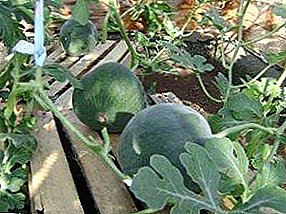 Humidity should be low.
Humidity should be low.- Required garter to the trellis.
- Appearing yellow flowers indicate the need to proceed to the next stage - pollination.
- The melons and gourds growing in the greenhouse require mandatory feeding with tree ash.
- Gourds should not touch the ground.
How to grow melons in a polycarbonate greenhouse? When growing melons above the fifth leaf, pinch the growth point (as on cucumbers). A week and a half - two processes of the lower row will appear. The weak must be removed immediately. On all strong shoots to stop the growth point. Important! If you want to get sweet, juicy large fruits, one berry should grow on each lash.
To do this, wait until the ovary grows to five centimeters. Choose the largest correct form. Rest ovaries and flowers will have to be removed, even if you like them. Otherwise, you get a lot of small, savory fruit with a grassy taste.
Do watermelons pinch the growth point above the fifth sheet. Later, they remove the two lower shoots (the flowers grow on them late, the fruits do not have time to ripen). Subsequent rods are tied to the trellis on either side of the main shoot. Shoots without ovaries are removed.
30 ° C is considered favorable for the development of melon crops. With prolonged heat, the greenhouse is aired by opening the vents or doors. This measure prevents the formation of condensation. Important! Melon will easily carry any heat. Watermelons from the scorching heat should be covered with protective material. You can plant a rocker plant (for example, climbing beans).
Watermelons and melons have a deep root system that allows them to extract water underground. When overmoistening the roots will rot, cracks appear on the fruits. The plants themselves will be told about the lack of moisture. If the leaves have planted, it is time to water. The drip irrigation system, which prevents water from entering the leaves, has proven itself well.
This should be done when the plants are still low, under the second or third leaf. With the growth of whip twisted.
It is important not to lose time. Male flowers will fall off in a few hours. Women are capable of pollination for three days. Poll melons can independently. But for this you need live helpers - bees.
In their absence, it is necessary to take the pollination process in their own hands. Find male flowers. They are large and without ovaries. Pluck them and remove the petals.
Do it very carefully. Do not shake off the pollen. Attach the stamens of male flowers to the pistils of the female several times.
It gives berries a sweet taste. Especially important is ash for melon. Mineral fertilizers are applied once a month. Every ten days it is recommended to water the plants with ammonium nitrate diluted in water (15 g per 10 liters of water). Important! As soon as the fruits begin to ripen, the feeding is stopped.
There are several ways to solve the problem:
- Ripening fruits to place each in a separate net and tie to the trellis. This is the best method to save watermelons and melons.
- Put a plate under the watermelon or melon. This method is good only for the lower fruits (or you have to bend the lash to the ground). By cons should be attributed the need to regularly turn the berries for their ripening.
- Make shelves of any material, fix them on the walls of the greenhouse. Fruits also have to be turned.
- Sometimes cardboard boxes are used instead of nets. They are difficult to attach to the trellis, it is difficult to monitor the development of the fetus.
On the maturity of watermelons will report shiny bark with a clear pattern, shrunken stem and a characteristic muffled sound when striking a berry. Ripe melons emit a unique aroma. Store the crop in cardboard boxes. Preferably each fruit in a separate container.
How to avoid mistakes?
 In some cases, melon berries are not tied. This happens because of mistakes.
In some cases, melon berries are not tied. This happens because of mistakes.
- Wrong seed selection. Buy them better in specialized stores. Pay attention to shelf life and the acceptability of cultivation in a particular region;
- Violation of the conditions of growing seedlings and fruiting plants. The formation of lashes, garter, pollination affect the formation of ovaries;
- Low ambient temperature. In the cold rainy summer need to provide additional heating greenhouses and highlighting plants with LED or sodium lamps.
Under uncomplicated conditions of planting and care, melons and gourds in greenhouses will grow no worse than under the southern sun. Environmentally friendly, nitrate-free watermelons and melons gardeners will enjoy a bountiful harvest and excellent taste.
Useful video:


 Humidity should be low.
Humidity should be low.